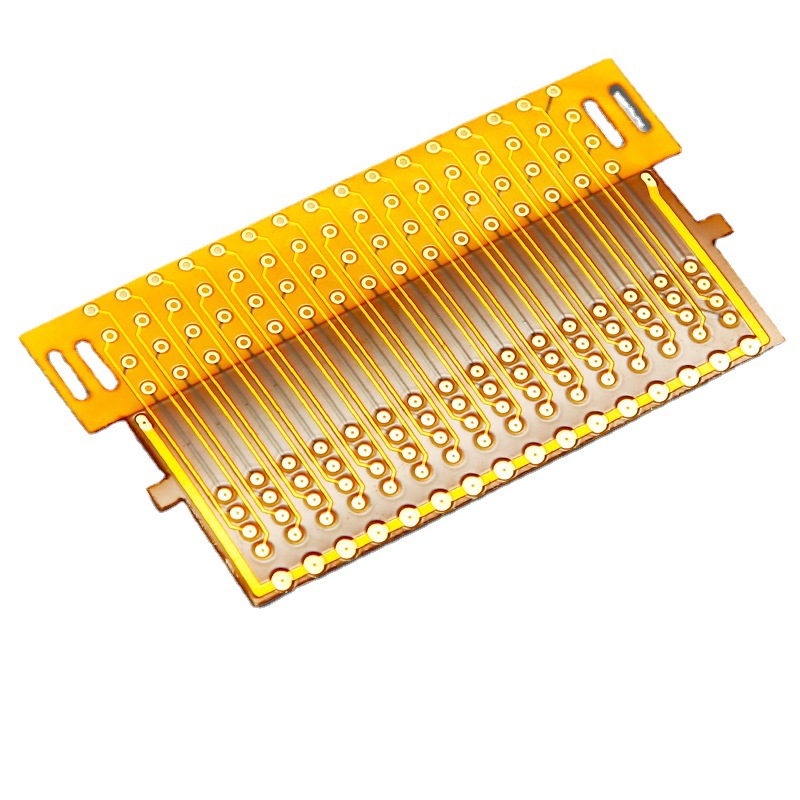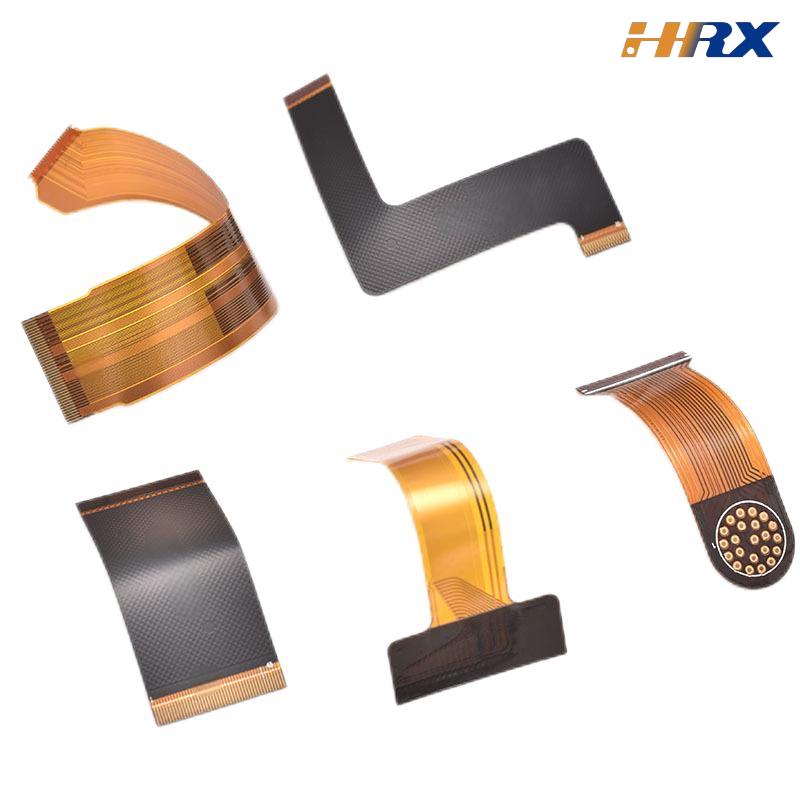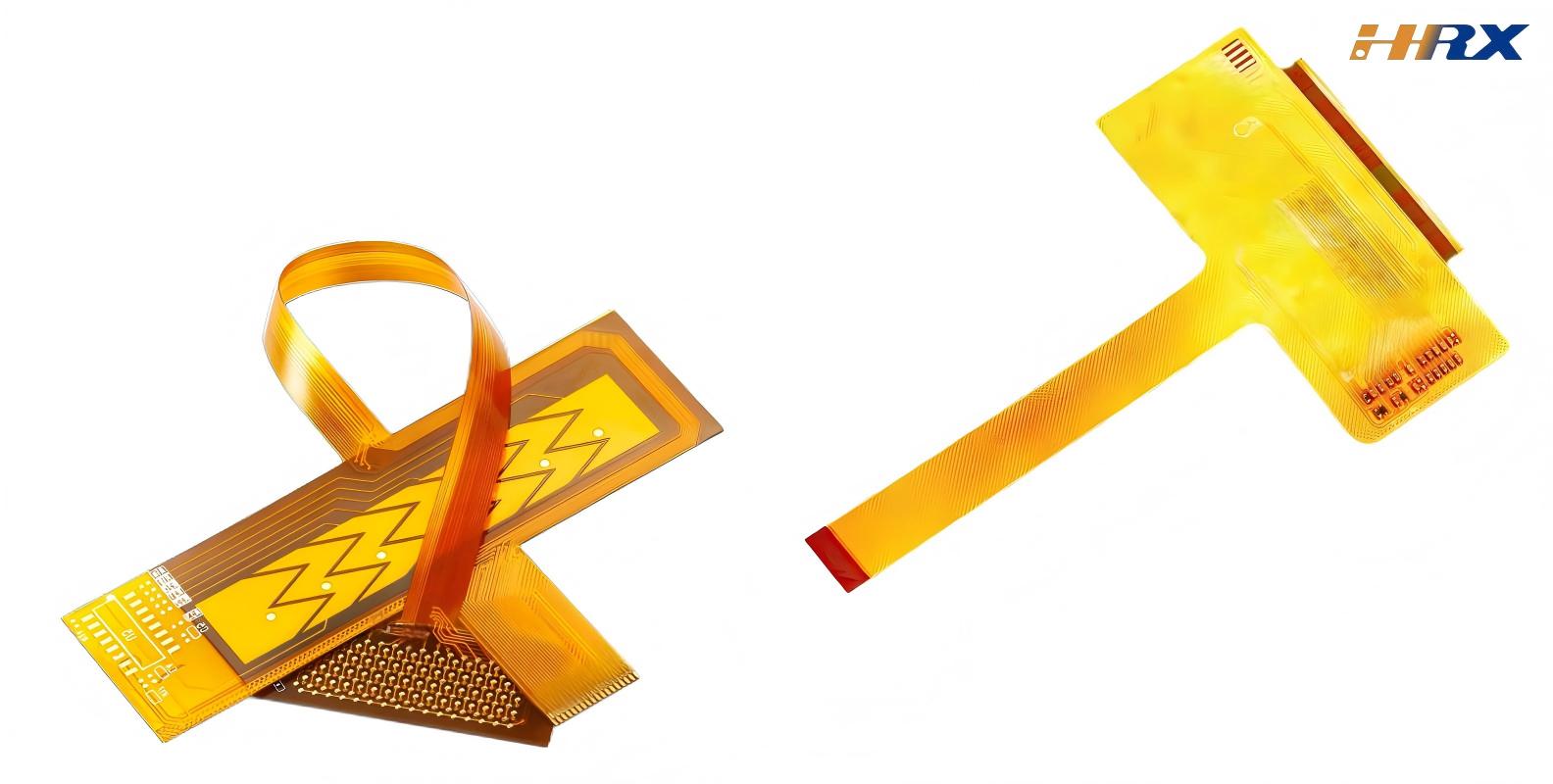Search
Innovative Technologies and Applications of FPC in Consumer Electronics
- Apr 30,2025
-
Share
In the rapidly evolving landscape of consumer electronics, the insatiable demand for thinner, lighter, multifunctional, and high - performance devices continues to drive innovation. Flexible Printed Circuits (FPCs) have emerged as a linchpin technology, empowering manufacturers to meet these exacting requirements with unparalleled efficiency. At Shenzhen Huaruixin Electronics Co., Ltd., a leading global ODM/OEM manufacturer specializing in FPC, PCB, and Rigid - Flex Printed Boards, we have extensive hands - on experience in leveraging FPCs to revolutionize consumer electronics products.

I. The Role of FPCs in Meeting Consumer Electronics Demands
A. Thin and Lightweight Design
The consumer electronics market, encompassing smartphones, tablets, and wearables, is witnessing a relentless pursuit of ultra - thin and lightweight form factors. FPCs, with their ultra - thin polyimide substrates and flexible construction, are the ideal solution. In smartphones, for instance, FPCs play a pivotal role in connecting critical components such as the display, camera module, battery, and motherboard. Their ability to be bent and routed in tight spaces enables a more compact internal layout, significantly reducing the overall thickness and weight of the device. A typical smartphone may incorporate multiple FPCs, each contributing to the seamless integration of components and the achievement of a sleek, ergonomic design. This not only enhances the user experience but also aligns with the aesthetic and functional requirements of modern consumers.
B. Multifunctional Integration
Today's consumers expect their electronic devices to offer a wide range of functionalities in a single, compact unit. FPCs are instrumental in enabling this multifunctional integration. They can accommodate a complex network of power - carrying traces and high - speed signal lines for data transfer. In smartwatches, FPCs connect the display, various sensors (including heart rate monitors, accelerometers, and gyroscopes), and wireless communication modules. By integrating these components on a single flexible substrate, FPCs simplify the manufacturing process, reduce the number of inter - connections, and enhance the overall reliability and performance of the device. This integration also allows for greater design flexibility, enabling manufacturers to create innovative and feature - rich products that stand out in the competitive consumer electronics market.
II. Innovative Technologies in FPCs
A. Advanced Materials
High - Performance Substrates
Polyimide is the workhorse material for FPC substrates, renowned for its exceptional thermal stability, high - temperature resistance, and mechanical strength. However, ongoing research and development efforts are focused on enhancing its flexibility while maintaining or improving other critical properties. Newer variants of polyimide are being developed with even lower coefficients of thermal expansion (CTE), which is crucial for preventing warping and ensuring stable electrical performance in high - temperature environments.
Liquid Crystal Polymers (LCPs) are emerging as a promising alternative to polyimide, especially in high - speed applications. LCPs offer superior electrical properties, including a low dielectric constant and low dissipation factor, making them ideal for high - speed signal transmission in 5G - enabled consumer electronics. Their high melting point also facilitates more efficient soldering processes, contributing to improved manufacturing yield and product reliability.
Conductive Materials
Copper remains the standard conductive material in FPCs, but continuous efforts are being made to optimize its performance. Manufacturers are using electro - deposited copper with a more uniform grain structure to improve conductivity and reduce resistance, particularly in applications where power loss needs to be minimized.
In addition, there is growing interest in alternative conductive materials such as silver - based inks for printed electronics applications within FPCs. Silver - based inks enable the creation of fine - pitch conductors, facilitating higher - density circuit designs. These inks are particularly useful in applications where traditional etching processes may be challenging or cost - prohibitive, offering a viable solution for miniaturization and enhanced functionality.
B. Manufacturing Process Innovations
Miniaturization and High - Density Interconnection (HDI) Technologies
The trend towards smaller and more powerful consumer electronics has fueled the demand for FPCs with higher - density circuitry. Laser - Direct Structuring (LDS) is a cutting - edge technology that enables the creation of three - dimensional conductive patterns on the surface of flexible substrates. This technology allows for more efficient routing of traces in a smaller area, enabling the connection of a large number of components in a compact space.
Fine - line etching is another key technique for achieving high - density FPCs. By optimizing the etching process, manufacturers can create extremely narrow conductive traces and small vias, increasing the circuit density and improving signal integrity. This is essential for high - speed data transfer in devices such as high - end smartphones, gaming consoles, and laptops.
Flexible Packaging and Embedded Components
Flexible packaging technologies are revolutionizing the FPC industry by enhancing the functionality and durability of FPC - based devices. This involves encapsulating the FPC and its components in a protective, flexible layer that provides resistance to moisture, dust, and mechanical stress. In wearable devices, such as fitness trackers and smartwatches, flexible packaging ensures long - term reliability even in harsh operating environments.
Embedded components within FPCs are becoming increasingly popular, as they offer significant advantages in terms of size reduction and performance improvement. By embedding passive components such as resistors, capacitors, and even some active components like integrated circuits directly into the flexible substrate, manufacturers can reduce the overall size of the assembly and minimize the length of interconnecting traces. This not only improves the electrical performance but also simplifies the manufacturing process, leading to cost savings and faster time - to - market.
III. Application Cases of FPCs in Consumer Electronics
A. Smartphones
Display Connection
FPCs are the backbone of smartphone display connectivity, especially in high - resolution, high - refresh - rate displays and bezel - less designs. In foldable smartphones, specialized FPCs are used that can withstand repeated bending without failure. These FPCs are engineered with multiple layers of flexible materials and conductive traces, designed to endure the stress of folding and unfolding thousands of times.
Camera Module Integration
With the increasing popularity of multi - camera systems in smartphones, FPCs play a critical role in connecting each camera sensor to the image signal processor on the motherboard. The flexibility of FPCs allows for easy routing of cables within the limited space of the phone's chassis, ensuring stable power supply and high - speed data transfer for high - quality image and video capture.
B. Wearable Devices
Smartwatches
In smartwatches, FPCs are used extensively to connect the display, sensors, and processing unit. Their ability to conform to the curved shape of the watch's body makes them the ideal choice for component interconnection. FPCs enable a neat and space - efficient design, ensuring that the smartwatch is comfortable to wear and performs reliably.
Fitness Trackers
Fitness trackers rely on FPCs for their operation, as they need to be flexible and durable to withstand the movement and bending associated with daily activities. FPCs connect the battery, display (if any), and sensors, ensuring that the device can accurately track fitness data and provide a seamless user experience.
C. Tablets and Laptops
Tablets
In tablets, FPCs are used for similar purposes as in smartphones, such as connecting the display, battery, and camera module. In detachable keyboard models, FPCs are used to create a reliable connection between the tablet's main body and the keyboard, enabling seamless data transfer and power supply.
Laptops
Laptops use FPCs to connect the keyboard, touchpad, and display to the motherboard. These FPCs are designed to be durable, as they may be subject to repeated flexing as the laptop lid is opened and closed. In addition, FPCs are used in laptops with high - resolution screens to ensure high - speed data transfer between the display and the graphics card, maintaining a smooth and high - quality visual experience.

IV. Design and Production Experience at Shenzhen Huaruixin Electronics Co., Ltd.
A. Design Considerations
Mechanical Flexibility Analysis
At Shenzhen Huaruixin Electronics Co., Ltd., we conduct in - depth mechanical flexibility analysis during the design phase. Using advanced simulation tools, we predict how the FPC will perform under various bending, twisting, and folding conditions. This helps us optimize the material selection, layer thickness, and trace routing to ensure that the FPC can withstand the mechanical stress without failure, even in the most demanding applications.
Electrical Performance Optimization
Ensuring excellent electrical performance is a top priority in our FPC design process. We carefully design the impedance of the signal traces to match the requirements of the connected components. For high - speed data transfer applications, we use controlled - impedance routing techniques to minimize signal reflection and attenuation, ensuring reliable and efficient data transmission.
Thermal Management Design
With the increasing power density in consumer electronics, thermal management is a critical aspect of FPC design. We incorporate thermal vias and select materials with good thermal conductivity to ensure effective heat dissipation from the components attached to the FPC. This helps to maintain optimal operating temperatures and prevent performance degradation due to overheating.
B. Production - related Key Factors
Precision Manufacturing Processes
Our manufacturing facilities are equipped with state - of - the - art equipment for precision manufacturing processes such as photolithography, etching, and lamination. We use high - resolution exposure systems in the photolithography process to ensure accurate pattern transfer, and carefully control the etching process to achieve the desired trace width and clearance with tight tolerances.
Quality Control and Testing
Quality control is integral to our production process. We have a comprehensive quality control system in place, including in - line inspection at every production step. After assembly, we conduct a series of rigorous tests, including electrical continuity testing, impedance testing, and mechanical flexibility testing. Automated Optical Inspection (AOI) machines are used to detect any defects in the circuit patterns, ensuring that only high - quality FPCs are delivered to our customers.
Supply Chain Management
Effective supply chain management is essential for ensuring smooth production. We maintain strong relationships with our material suppliers to ensure a stable supply of high - quality raw materials, and work closely with our component suppliers to ensure timely delivery of components. This enables us to meet our customers' production schedules and maintain the highest level of product quality.
In conclusion, FPCs are at the forefront of innovation in the consumer electronics industry, enabling the development of thinner, lighter, and more functional devices. At Shenzhen Huaruixin Electronics Co., Ltd., we are committed to leveraging our expertise in FPC design and production to drive innovation and meet the evolving needs of our customers. We invite industry peers, both new and old, to engage in technical exchanges, collaborative learning, and mutual improvement. By sharing knowledge and experiences, we can jointly explore new frontiers in FPC technology and contribute to the continued growth and success of the consumer electronics industry.

Let’s talk! We’ll provide the perfect solution for you!
-
 Huaruixin Electronics mainly produces printed circuit boards as the core business, to provide customers with one-stop solutions for FPC/PCB production, components sourcing and Assembly.
Huaruixin Electronics mainly produces printed circuit boards as the core business, to provide customers with one-stop solutions for FPC/PCB production, components sourcing and Assembly. - WHAT WE DO — PCB Design Solutions — Flex PCB Production — Components Sourcing — FPC&PCB Assembly
- PRODUCTS — Single Sided Flexible Circuits — Double Sided Flexible Circuits — Multilayer Flexible Cirucits — Rigid-Flex Circuits — FPC Assembly — PCB Assembly
- CAPABILITY — FPC Capability — Rigid-Flex Capability — PCB Capability — Assembly Capability
- Copyright © 2024 Shenzhen Huaruixin Electronics Co., Ltd. All Rights Reserved.
- Design By BONTOP


